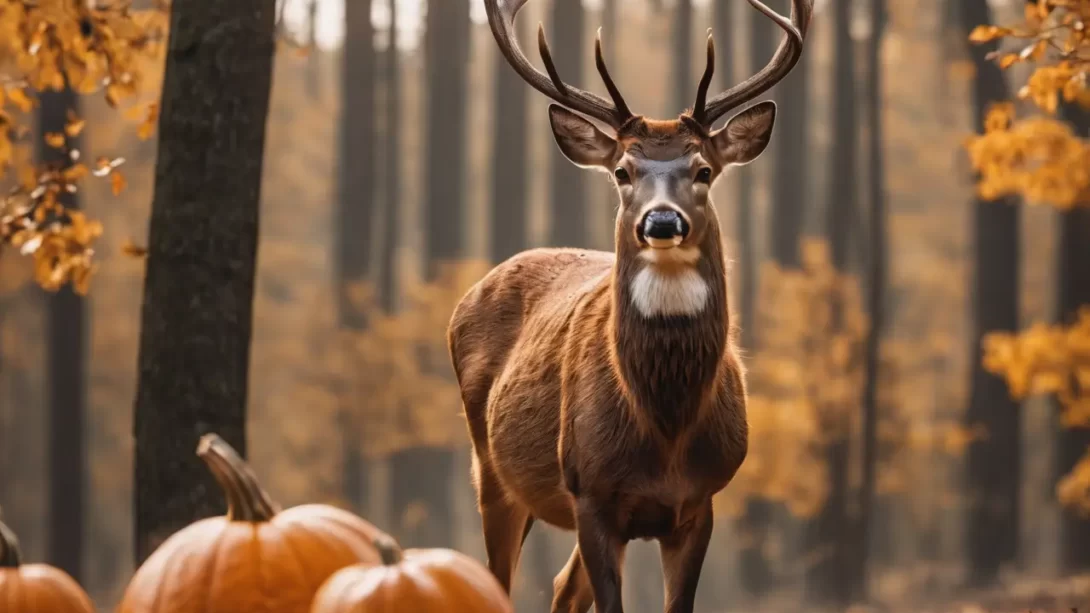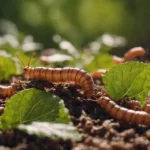Deer, known for their adaptability and varied diet, often intrigue people with their dietary choices. As fall arrives and pumpkins adorn fields and porches, a question arises: do deer like to eat pumpkins? Understanding deer’s dietary habits, especially their interaction with agricultural produce like pumpkins, is not only interesting but also important for farmers and gardeners.
Deer’s Natural Diet
Deer are primarily herbivores and their diet typically includes leaves, grasses, fruits, and nuts. They are known for their ability to adapt their diet based on the availability of food sources, which often changes with the seasons. In the spring and summer, deer tend to eat more green vegetation, while in the fall and winter, they often switch to more woody, fibrous plant material. This adaptability is a key factor in their survival across diverse habitats.
Deer and Pumpkins: A Dietary Match?
Pumpkins, being a plant-based food source, naturally fit into the deer’s potential diet. These large, nutrient-rich fruits offer a substantial amount of sustenance. Pumpkins are high in vitamins and minerals, and their soft flesh can be an easy food source for deer, especially when other options become scarce in colder months. The sweetness of the pumpkin flesh can also be appealing to deer, much like it is to humans and other wildlife.
Observations of Deer Eating Pumpkins
There have been numerous observations and reports of deer consuming pumpkins. These sightings often occur in rural areas or regions where deer populations are high and human habitation intersects with natural habitats. Deer are typically seen eating pumpkins that are left out in fields after harvest or even those used for decorative purposes on porches and in yards. The deer usually break into the pumpkin to access the soft and nutritious insides, leaving the hard outer shell.
Factors Influencing Deer’s Attraction to Pumpkins
Several factors contribute to deer’s attraction to pumpkins. One significant factor is the availability of their natural food sources. In fall and early winter, when green vegetation becomes scarce, deer are more likely to seek out alternative food sources, including pumpkins. The natural sweetness of pumpkin flesh can also appeal to deer, much like it attracts other animals. Additionally, the easy accessibility of pumpkins in fields or gardens can make them an attractive option for deer looking for an easy meal.
Implications for Gardeners and Farmers
For gardeners and farmers, deer’s fondness for pumpkins can pose challenges. Deer feasting on pumpkins can lead to significant crop damage, particularly in areas where deer populations are robust. This can be a concern for those growing pumpkins for commercial sale or personal use. In the next section, we will discuss strategies to protect pumpkin patches from deer and the importance of understanding wildlife behaviors for effective agricultural and garden management.
Protecting Pumpkin Patches from Deer
For gardeners and farmers seeking to protect their pumpkin crops from deer, several strategies can be effective. Fencing is one of the most reliable methods. A high fence, preferably 8 feet tall, can act as a physical barrier to prevent deer from accessing the pumpkins. Another method is using deer repellents, which can be either commercially purchased or homemade, using ingredients like garlic, hot peppers, or eggs, which emit smells that deer find unpleasant.
In addition to physical barriers and repellents, scare tactics can sometimes deter deer. This includes using motion-activated sprinklers, lights, or noise-making devices. However, deer can become accustomed to these over time, so it’s best to use them in conjunction with other methods.
Ethical Considerations and Coexistence
While protecting crops is important, it’s also crucial to consider ethical and sustainable practices in wildlife management. Understanding and respecting the natural behaviors of deer, and seeking ways to coexist with them, can lead to more effective and humane solutions. This might involve planting deer-resistant crops as a buffer or allocating a portion of the harvest for wildlife.
Conclusion
Deer do indeed show an interest in eating pumpkins, particularly when their usual food sources are scarce. For those growing pumpkins, understanding this behavior is key to effectively managing and protecting their crops. By employing strategies like fencing, repellents, and scare tactics, and considering the natural ecology of deer, gardeners and farmers can find a balance between cultivation and coexistence with wildlife. Recognizing the role of deer in the ecosystem and respecting their natural dietary habits contributes to a more harmonious relationship between agriculture and nature.




